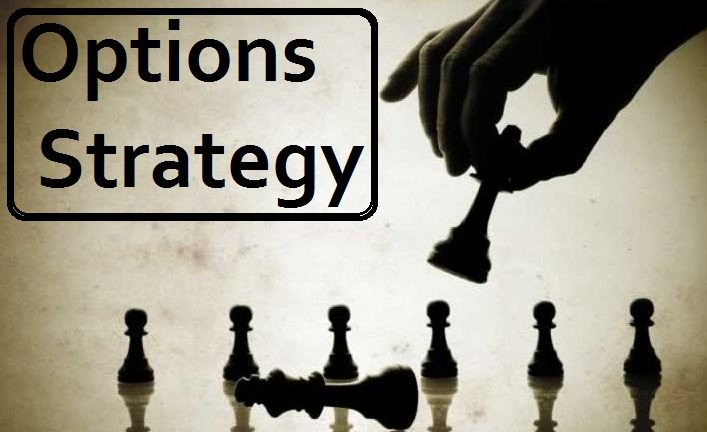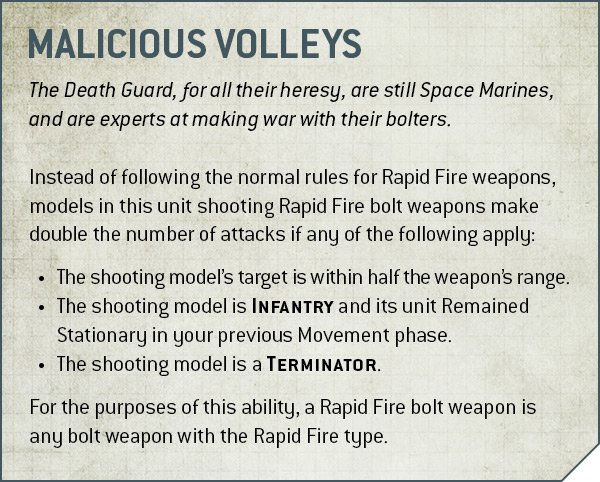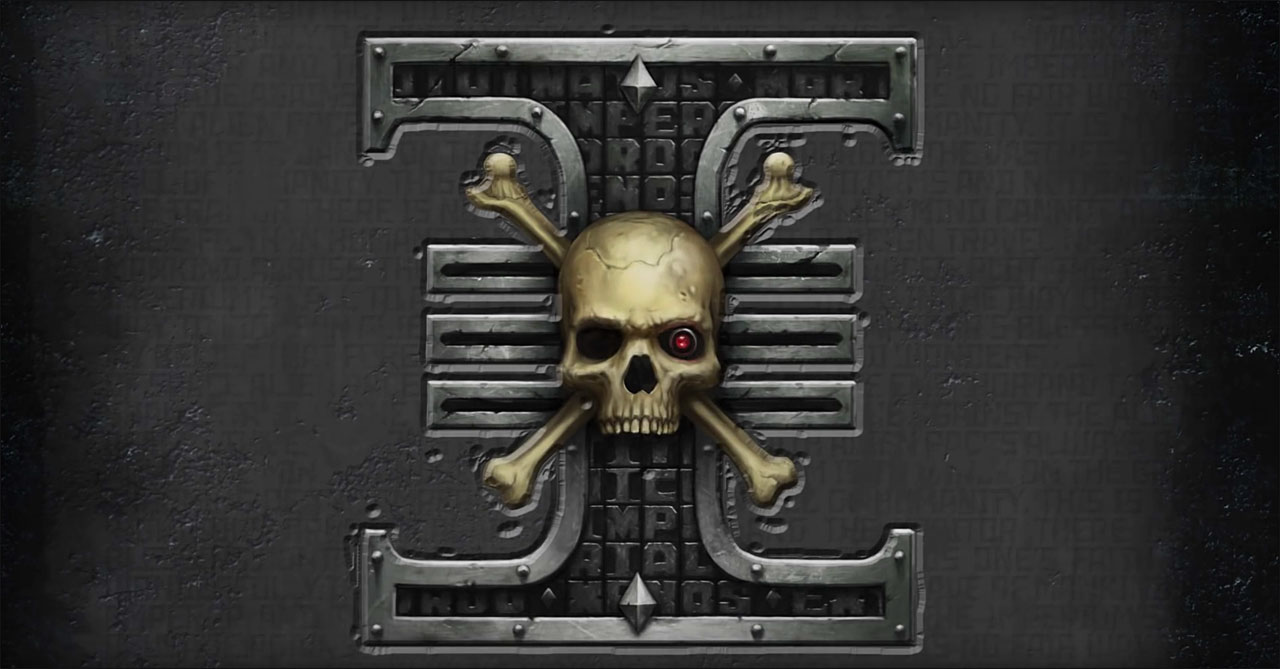Games Workshop has released a number of codices and supplements so far, enough that we can use them to draw some inferences about what their design philosophies will be in 9E. So let’s take a look at some best guesses for what we’ll see going forward. Click to read on, or check out the Tactics Corner for more reviews and strategies.

Stratagems
I think this is where we will see some of the biggest changes from the player perspective; because they are player-activated and player-dependent, stratagems can heavily influence the way players perceive a game, and they arguably are one of the places where skill shows through. While the reception for stratagems was generally positive in 8th Edition, there were certainly many complaints about how they functioned- many of which were well-founded. GW appears to have taken these complaints to heart and is trying to fix these issues.
One of the big issues was the bloat of stratagems; it wasn’t uncommon for an army to run two factions, each of which would have its own codex, a Psychic Awakening book, and then possibly another supplement or two on top of that. Not only is this a lot to carry around, but it could also be in the neighborhood of a hundred stratagems for a player to remember- far more of a mental load than any but the most dedicated player can remember. Worse yet, the vast majority of them are niche in their application at best, with only a small handful seeing play most of the time.
The Space Marine book in particular saw its number of stratagems cut down noticeably- although the addition of the supplements somewhat undoes this work, unfortunately. This trimmed-down list is a lot more manageable to remember (in part because of being split into categories, to allow for easier reference) but it also has another important feature: each individual stratagem is generally lower-impact. Whereas before an entire codex could hinge on whether a 3CP vs 2CP “shoot twice” stratagem existed for the book, the new codices seem to have taken pains to ensure that stratagems affect play but do not completely define it. Double-fight and double-shoot strats in particular seem to be largely a thing of the past, existing only for specific units if at all. Given how much of a game could swing on them, this is probably for the best, and in their place we instead have a wide variety of general-use strats that can apply limited (but relevant) bonuses. The Necron “spend 1CP, autopass a wound roll” strat is a great example of this- it isn’t flashy but it does something that can come up often enough to be relevant and does it better than the core rulebook strats. GW seems to have recalibrated what they think 1, 2, and 3 CP strats should be able to do with a lot more precision, and I think that will be very beneficial in combination with the other changes to command points.

Units
Unit design seems like the least changed aspect of 9E; while there certainly have been changes to unit and weapon statlines, the fundamental philosophies haven’t really shifted. Mostly it seems to be a cleaning-up of the more complicated or unusual abilities, with some of those being shifted over to unit-specific stratagems (e.g. the Apothecary’s ability to resurrect a model.)
One major change is in unmodified die rolls trigging abilities, though. Previously there were a lot of abilities that triggered on a 1 to hit (such as plasma) or on a 6+ to hit/wound. With the ability to stack modifiers, this could allow for some extremely silly stuff such as Tesla proccing its extra hits on a 4+, or doing the same with mortal wounds in Chaos. GW has recognized this sort of thing as a problem and very much not how they intended the rules to function, and to my knowledge all such abilities so far have been changed to only activating on unmodified die rolls of 1 or 6, as appropriate.

Faction Abilities
This is a bit more of a mixed bag overall, but we’ll start with the good- GW has finally come to understand that mixing factions is inherently powerful, as it gives you access to a wider variety of units and options, and if nothing is done to contain it multifaction armies will virtually always dominate. As a result, they have finally implemented actual bonuses for mono-faction armies, like Necron Command Protocols and the like. Whether or not these will be enough to consistently tip the balance remains to be seen, but the fact that they are being implemented at all is a good sign, I feel. Soup armies have long been complained about and some basic level of deterrence for them is absolutely needed in the game.
On the less positive note, however, we are seeing a major bloating of faction abilities as a whole- a Space Marine army has an absurd number of special rules from Bolter Drill to Shock Assault to their faction and subfaction traits to Doctrines to their superdoctrine, plus even more universal rules for their units. The Death Guard book appears to be following in a similar vein, with an increasing number of special rules and options to apply to units. While introducing some additional rules isn’t bad to differentiate various factions from each other (coughcoughthirteenmarinecodicescough) I am somewhat worried that they may be taking this too far and adding so many faction-specific choices and rules that it essentially just takes the place that stratagems used to have. That’s definitely a bit more speculative on my part than the other ideas here, but it’s something I will be watching in the future to see if it develops into a problem, and hopefully GW will as well.
However, with all of that said I think that broadly the game is going in a good direction. While I do not at all appreciate the fact that seven of the first eight books released are Marine variants and that Space Marines in particular have snapped right back into being the hands-down most powerful codex in the eyes of most, a bad flashback to last edition, it is hard to be too angry about it given the lack of events at which this could grow tiresome or for us to get a truly absolute picture of what is going on with the meta. I am hoping that by the time events resume on a large scale the problem will have solved itself with the release of more varied xenos books- and perhaps a Tau or Craftworlds book that isn’t utter garbage, if I am lucky. Despite the time that has passed since its release, we are still extremely early into the days of 9th Edition and there is a lot more ground to be explored, and in one form or another I’m sure the competitive community will continue to do so.
As always, remember that you can get your wargaming supplies at great discounts every day from the Frontline Gaming store, whether you’re looking to start a new army or expand an existing one.



Combat Attrition is the worst new rule addition. It neuters games and take player agency away. 9th edition is almost ruined by this new rule.
How exactly it ruins and neuters the game? How does it take player agency away?
I actually disagree- compared to the earlier iterations of morale, it is actually a much more interesting rule in a lot of ways. First and foremost, it removes the “autokill” issue that 8E had, where after causing a certain number of casualties on a large unit (e.g. Orks or Guardsmen), you were guaranteed to kill them via morale unless the opponent spent 2CP. This was too consistent and automatic to feel appropriate for a morale rule, since you could predict what would happen with absolute certainty.
Secondly, it equalizes the relevance of morale across most unit sizes, which I think is good. Units of all sizes now have to concern themselves at least minimally with morale, and the random nature means that there is always some tension in terms of what happens with the test. It also very, very rarely will kill an entire unit by itself, which I think is good.
That said, if you don’t enjoy it from an experiential perspective that’s obviously your prerogative, but from a gameplay perspective I think it is significantly superior.
I have no idea how you can think combat attrition is the worst new rule.
Previously, if you failed a morale test, your entire unit was destroyed. Now, if you fail a morale test you will only lose each model on a roll of a 1 or a 2.
This is arguably much better for larger units, who were really punished if they did not have some form of morale mitigation (synapse, Mob rule, etc).
did you watch any of the interviews with Stu Black about what #newedition was supposed to be about ??
ever use the SM Doctrines in the previous edition ?
I quite like the changes BUT without any serious competitive games it’s hard to know what list to build.
Games Workshop’s marketing material is not a good basis for actually assessing where the game is at and where it is going. Corporate propaganda is intentionally misleading.
I have no doubt that _you_ have no idea how to write a list; we may disagree on many other things, but on the subject of your utter inability to function in a competitive environment, we are in accord.
Rob Butcher stumbles down the street clutching a newspaper. Desperate, he collars a passerby. “What year is it he asks?” “2038,” they say. “Who won NOVA this year?” Rob demands.
The passerby laughs. “Tau? Same as the past 18 years?” the passerby says and starts laughing harder. They have Commander Farsight’s face.
Rob Butcher wakes up screaming. The nightmare happens every night.
lolololol, amazing
Hahaha!
You just butchered Rob
I gotta respect game.
I love this so much
I love it!
Combat attrition is a nice rule, it feels like it might work better on a 1-2 by default and a 1-3 when below 50% though. Maybe even a 1-3 by default, 1-4 below 50%.
That makes Morale a VERY significant part of the game and failing a test becomes a real threat, whilst still not being an auto-delete option. Leadership shenanigans finally become relevant!